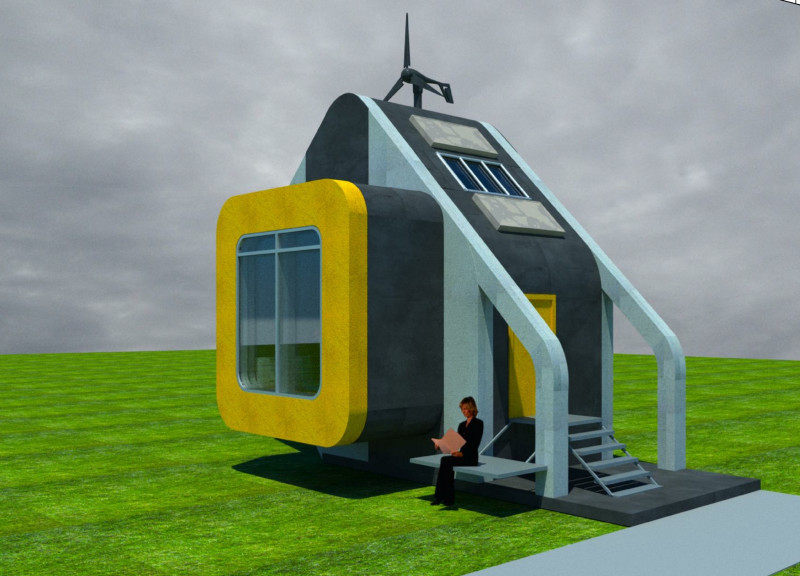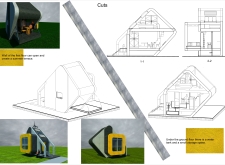5 key facts about this project
The compact living solution designed for two individuals fits within the urban context of Astana. The overall design concept focuses on creating spaces that feel human-scale in a city where buildings often seem very far apart. By placing residences into underused areas such as parking lots and vacant plots, the design aims to foster a sense of community and personal belonging within a crowded environment.
Layout and Functionality
The design features a two-level layout that organizes living spaces effectively. The first floor includes key areas: a living space that also serves as a workspace, a cooking area, a bathroom with a shower, and small storage options. This setup creates a versatile environment where daily activities can happen without losing connection to each other.
Transformational Features
A key element of the kitchen is its ability to change form. The table and chairs are designed to fold away into the wall, which allows for more open space when needed. This flexibility is further enhanced by the wall that opens up to a hidden terrace, promoting an outdoor connection while increasing the overall livability of the area.
Spatial Organization
The design elevates the living or working area, distinguishing it from other parts of the home. This separation not only adds a visual dimension but also enhances privacy. Under the raised section, additional storage can be found, making smart use of the available space without cluttering the interior.
Material Selection
The building employs selected materials such as fiberglass sheets, galvanized thermal profiles, mineral wool plates, and vapor barrier films. These materials are important for their durability and energy efficiency. They not only support the structure but contribute to a sustainable approach in this urban setting.
An opening wall leads to a summer terrace on the first floor, inviting natural light and outdoor air into the living space while providing a private outdoor retreat. This design detail connects the indoor and outdoor environments, allowing for a fuller enjoyment of the surrounding space.






















































